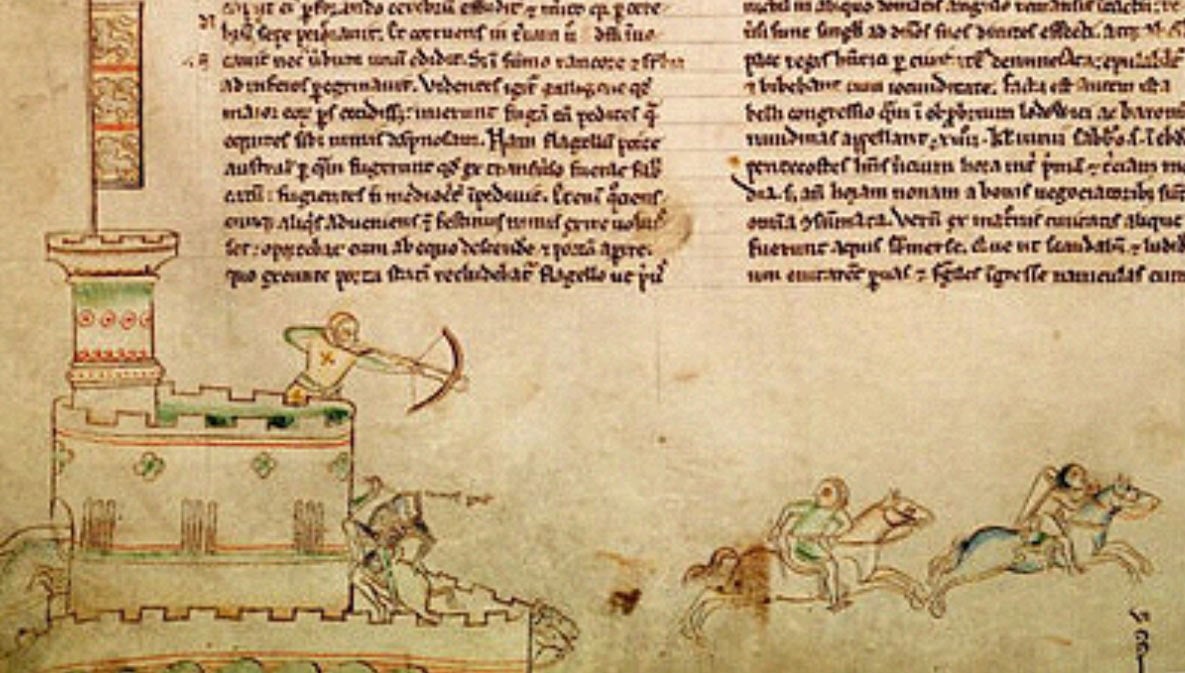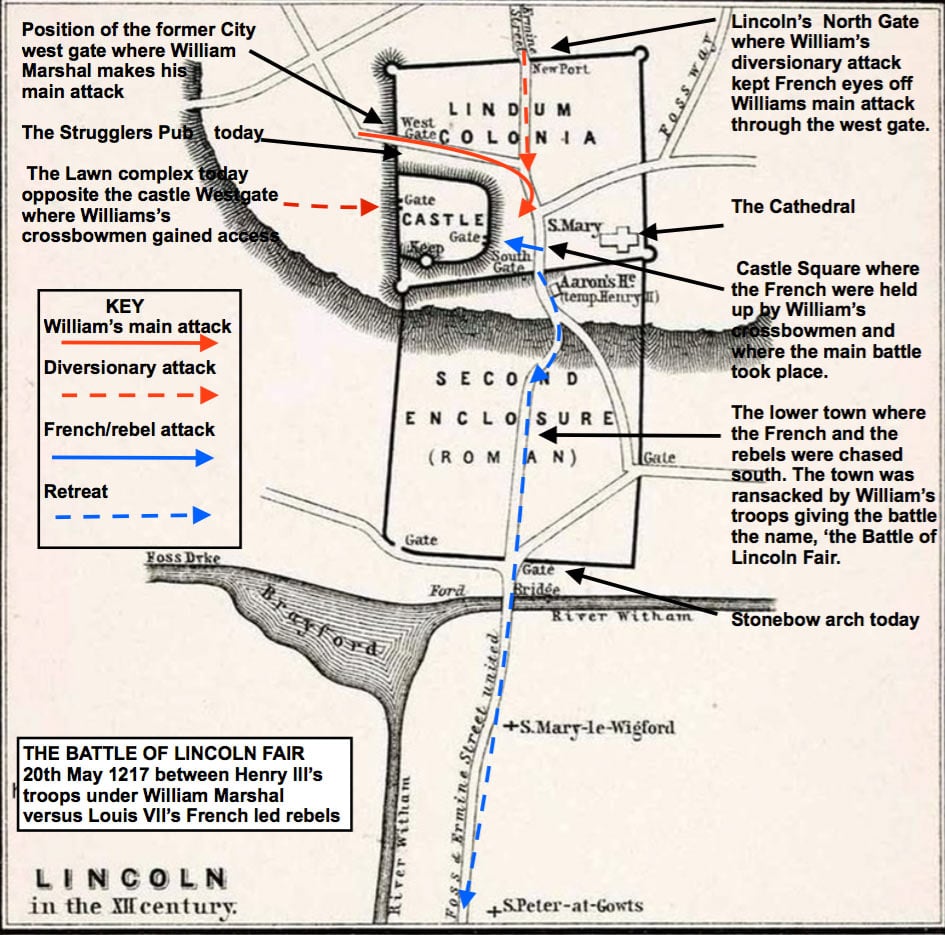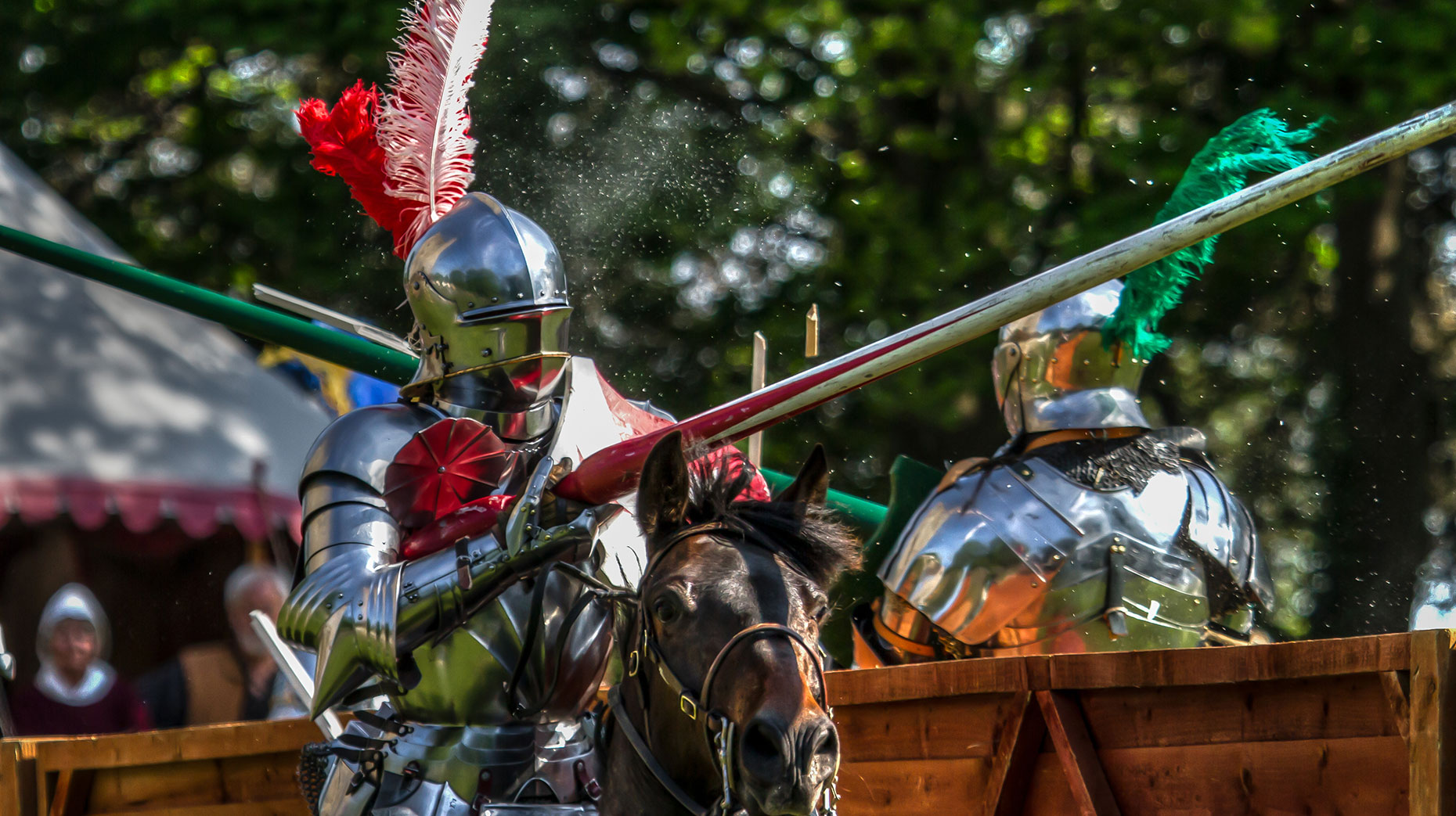Rod Wilson is the former coach of the Lincoln Ladies football team and is a local historian. He is currently writing a book on the Battle of Waterloo and a booklet on the Battle of Lincoln for the next year’s 800th Anniversary.
I’m sure many of you are fed up with the EU referendum, but how many of you know that Lincoln was at the centre of a much more bloody Brexit campaign in 1217?
This came only two years after King John had signed the Magna Carta, a copy of which is held in Lincoln Castle around which the bloody battle of Lincoln Fair took place.
King John had been forced by his Barons to sign the Magna Carta in 1215 but when John reneged on the Democratic Charter many of his Barons offered the throne to the French Prince Louis. In 1216, Louis invaded England and by October 1216 only a few castles were left in King John’s hands, Dover, Windsor and Lincoln.
Lincoln Castle was held by the castellan of the castle, Nicholaa de la Haye, a most remarkable woman. Despite the upper and lower town being taken by the French led rebels, Nicholaa hung on to the castle and refused to hand it over.
Hearing about the fall of the city, the now desperate King John marched north to relieve Nicholaa but became ill on the way and died of dysentery on October 18, 1216 at Newark.
King John’s rightful heir was his nine-year-old son Henry III but things looked bleak for the boy with much of the country including London being held by Prince Louis, who intended to incorporate England in to a greater French European empire.
But when all seemed lost our hero William Marshal, the 70-year-old Earl of Pembroke, decided against all advice to protect the nine year old King stating that, “If everyone abandons the boy but me[…] I will carry him on my back and hop from island to island and country to country even if I have to beg for bread.”
When Louis split his vast army in two, leading one section to attack Dover while the other attempted to dislodge Nicholaa de la Haye from Lincoln castle, Earl William rushed his small force north to attack the French at Lincoln.
William arrived just in time on May 20, 1217 because the castle’s East Gate was being attacked from Castle Square. The Earl sent crossbowmen into the castle from the West Gate, opposite today’s Lawn complex, to drive the French knights away.

Medieval manuscript showing the the battle.
Having found the upper town’s Westgate was barricaded, William had to wait until his men could clear the mass of stone rubble away. At the same time he ordered Ranulf of Chester to commit a diversionary attack on the old Roman north gate, known today as Newport Arch.
At about midday William, the 70-year-old warrior, mounted his war horse and charged with his knights through the now open and unprotected City Westgate.
The knights tore along Westgate Street and around the castle walls to completely surprise the French/ rebels in the castle square. A rebel engineer manning a trebuchet was decapitated before a vicious melee broke out, forcing the French back into Minster Square.
Here in front of the cathedral the rebel and French knights were rallied by their leader Count Thomas of Perche and started pushing Marshal’s knights back. William Marshal himself took three blows to the head leaving dents in his helmet.
All this time the diversionary attack on the city’s North Gate had been taking place and finally Ranulf of Chester broke through and stormed up the Bailgate to reinforce William’s knights. As the French/rebel force started to lose heart they were pushed back down Steep Hill.

Medieval battle map showing Lincoln’s familiar landmarks.
William’s men were probably still outnumbered, but now the slope of the hill favoured them and the tightness of street prevented the rebels getting all their men to the front.
William’s plan to fight in the streets had evened things up. Soon the beleaguered French/rebels started to turn and run and it became a rout. The exhausted 70-year-old William Marshal let Ranulf of Chester pursue the fugitives.
A number of high ranking Frenchmen were captured but as always, it was the foot soldiers who paid the price. Crammed together trying to escape through the city’s south gate, now the Stonebow, and again over the Witham bridge, a hundred yards further south on the High Street, they were ruthlessly slaughtered.
Then, as nearly 200 rebel and French knights made their escape to London it was the people of Lincoln that were made to suffer. William’s men ransacked the city in what was deemed as a just punishment for the citizens of Lincoln alleged support of the French. It was this ransacking that gave the second battle of Lincoln the nickname, the battle of Lincoln fair.
The wise old William Marshal, Guardian of the Realm, then offered the Rebel Barons an amnesty and most switched allegiance to the young Henry III.
Louis returned to France but made another attempt to invade England in August 1217. William watching from the shore, at Sandwich, saw a makeshift English navy destroy the French mini armada. This was the end of Louis attempt to build a Franco-English Empire and the beginning of the rebirth of England after the disaster of the Norman conquest.
The elite ruling class slowly became British giving up on the French language and English becoming the universal tongue. The Battle of Lincoln Fair has been described as the most decisive victory in English history.
It certainly was Lincoln’s own first Brexit.





